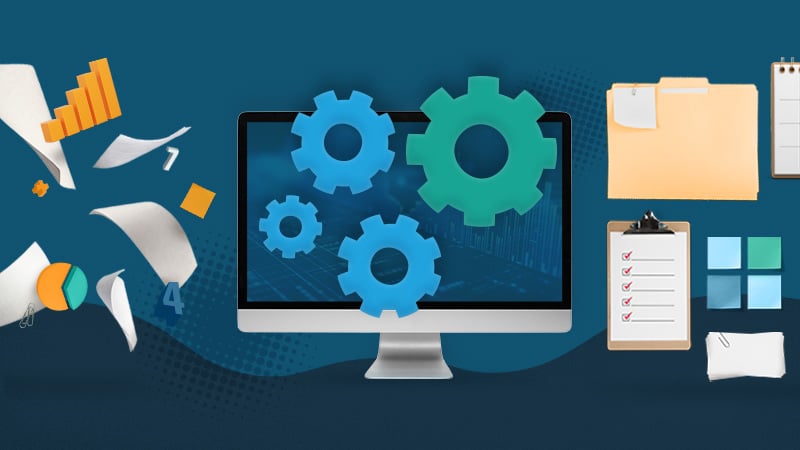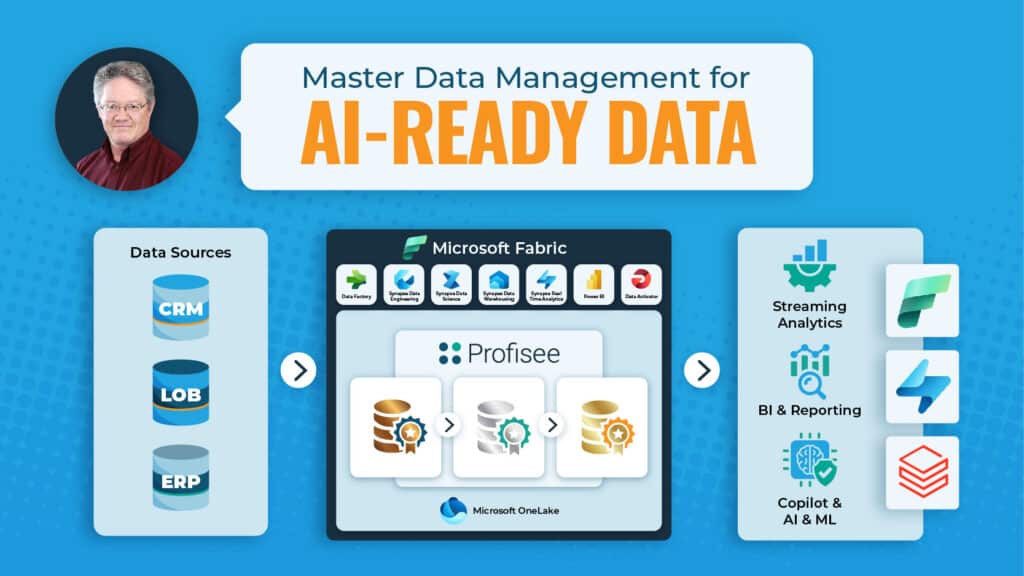Data is a critical asset, but not all data is created equal. To truly unlock its value, organizations need consumable data — data that’s ready to be used by the business for decision-making and insights. But what makes data “consumable?”
In this article, we’ll break down the three essential attributes of consumable data: it must be accessible, governed and packaged for use. These characteristics ensure that your data isn’t just available — but ready to be used effectively to drive business outcomes.
Consumable Data Defined
Before we dig into the detailed attributes of consumable data, let’s start by defining consumable data. Put simply, consumable data refers to information that is ready for business use — whether that’s for enterprise analytics, AI applications or other use cases — without manual data prep or remediation.
At its core, consumable data goes beyond raw or isolated master data, such as golden records produced by MDM systems. While golden records provide a single source of truth by cleaning up inconsistencies and duplicates, they represent only the mastered data, often referred to as “silver-medallion data” in the lakehouse medallion architecture (explained in more detail below).
Consumable data, however, integrates this golden record with transactional data, enriching it to provide actionable insights that answer critical business questions.
Attributes of Consumable Data
To better describe the concept of consumable data in context, I’ll share more on what I consider to be the three essential attributes of consumable data: accessibility, governance and packaging.
1. Consumable Data is Accessible
For data to be consumable, it must be accessible to those who need it—specifically, your business users and data analysts. It’s not just about having data available somewhere in a database; it’s about knowing where to find it and trusting the information they uncover.
Key aspects include:
- Discoverability: Data should be well-organized and documented, so analysts know where to look. Metadata, business glossaries and data catalogs play a crucial role in making sure data can be found and understood.
- Trustworthiness: Accessibility goes hand-in-hand with trust. When analysts query the data, they need to be confident in its quality. Golden records created by MDM provide a trusted starting point, but to make data truly consumable, it must be enriched with real-time transactional data. Unvetted, raw data might cause more confusion than clarity, so the data must be curated and validated.
Example: Imagine a marketing analyst trying to forecast customer trends. Instead of spending hours sifting through multiple databases, the analyst should be able to easily access a reliable, unified dataset that contains the full customer history, filtered and packaged for analysis.
2. Consumable Data is Governed
One of the cornerstones of consumable data is that it is governed — it must be clean, accurate, and representative of the entities it describes. Governed data is remediated for inconsistencies, duplicates and irrelevant information. It’s also standardized in a way that makes sense to the business.
Key aspects include:
- Data Remediation: Governance involves cleaning up errors, resolving duplicates, and ensuring that data is consistent across systems. This ensures that the data accurately reflects the real-world entities—customers, products, employees—that it’s supposed to represent.
- Business Relevance: Governed data is described in terms the business understands, rather than technical jargon. For instance, while an MDM system can provide a golden record that reflects an accurate and consistent customer profile, it becomes truly valuable when integrated with transactional data—such as purchase history or service interactions—to answer specific business questions.
Example: For a financial services company, governed data means that a single customer has one profile across all systems—billing, customer service and marketing. The customer’s transactions and interactions are merged into one accurate view, making decision-making more reliable.
3. Consumable Data is Packaged for Use
Even the most accessible and well-governed data won’t be consumable unless it’s packaged in a user-friendly way. Rather than presenting raw datasets, consumable data is packaged in a way that’s ready for action, often referred to as a data product. This might take the form of a dashboard, a report, or a pre-configured dataset that’s ready to plug into an analysis tool.
Key aspects include:
- Data Products: Think of consumable data as a product delivered to end users—complete with intuitive visualizations, actionable insights, and relevant context. Instead of delivering massive spreadsheets, deliver data that’s already tailored to a specific use case.
- Fit for Purpose: Different business functions have unique needs. A golden record by itself might show a clean, consolidated customer profile, but consumable data packages this with real-time information, like purchasing behavior or customer service issues, to answer business-critical questions like, “What is the probability of an upsell opportunity?”
Example: A customer service manager doesn’t need raw data on every customer interaction. Instead, they need a dashboard showing trends in escalations and unresolved tickets, helping them identify areas for improvement and respond proactively.
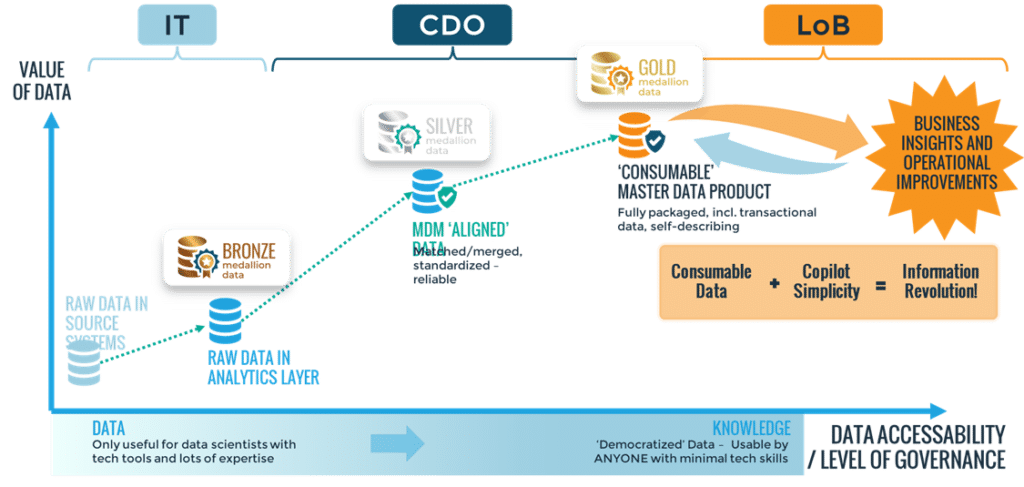
Consumable Data in the Context of Lakehouse Medallion Architecture
When discussing consumable data, it’s important to frame it within modern data architectures like the lakehouse medallion architecture. This architecture, popularized by platforms like Databricks, helps businesses manage their data as it progresses through multiple stages, eventually transforming it into a consumable form — often referred to as gold-medallion data.
In a medallion architecture, data flows through three key layers:
- Bronze Layer: Raw, unprocessed data collected from various sources. This layer includes structured and unstructured data but is not yet ready for analysis.
- Silver Layer: Cleaned, filtered, and aggregated data. It’s more structured but might still require some transformation before it’s fully useful. Even golden records output by an MDM platform are considered silver-medallion data in isolation, as they encompass only master data.
- Gold Layer: This is where data becomes consumable. The gold layer contains high-quality, governed data, structured and packaged in a way that is ready for immediate use in analytics, dashboards, and AI applications.

Gold-medallion data is considered fully consumable because it meets the three attributes we discussed:
- Accessible: Gold data is well-documented and organized, allowing analysts to easily query and understand it.
- Governed: By the time data reaches the gold layer, it has been cleaned and validated. Any duplicates or inconsistencies have been remediated, ensuring that the data reflects real-world entities accurately.
- User-friendly: The gold-medallion data is packaged as data products, like dashboards or datasets designed for specific business functions. This makes it actionable for end users without requiring further manipulation.
The lakehouse medallion architecture ensures that raw data evolves into a valuable asset, turning it into the gold that powers decision-making, analytics, and AI. For businesses, leveraging this architecture is crucial to ensuring that their data is truly consumable and ready to drive insights.
For more details on medallion architecture, visit the Databricks Glossary.
Consumable Data in the Context of Master Data Management
In the realm of data management, understanding the distinction between golden records and consumable data is crucial for organizations seeking to leverage their data assets effectively.
Golden records refer to the remediated, single source of truth data produced by a Master Data Management (MDM) program. These records are cleaned of duplicates and inconsistencies, providing a reliable representation of critical business entities. However, golden records alone can be considered only silver-medallion data in a medallion architecture context.
To truly make this data consumable, it must be combined with non-master, transactional data. This integration enables organizations to answer complex business questions and derive actionable insights. For example, while a golden record may provide a complete view of customer profiles, consumable data integrates this with transactional information, allowing businesses to explore inquiries such as:
- “Identify high probability up-sell opportunities.”
- “Chart excess risk in the Southeast.”
- “How is customer satisfaction trending in Canada?”
Here is a brief overview of master data and real-time transactional data required to paint a comprehensive picture of business dynamics.
| Data Type | Master Data | Transactional Data |
|---|---|---|
| Definition | Single source of truth for critical entities (e.g., customers, products, reference data). | Day-to-day business operations data (e.g., purchases, payments). |
| Use Case | Provides a complete, accurate view of key entities. | Tracks activity and interactions to generate insights. |
| Example | Customer profiles, product listings. | Sales transactions, support tickets. |
In this context, consumable data represents a higher level of readiness, combining the accuracy and reliability of golden records with the contextual richness of transactional data. By establishing a seamless flow between these data types, organizations can empower their teams to make informed decisions, drive customer engagement, and optimize operations.
This comprehensive approach not only enhances data usability but also positions businesses to harness the full potential of their data in today’s competitive landscape.
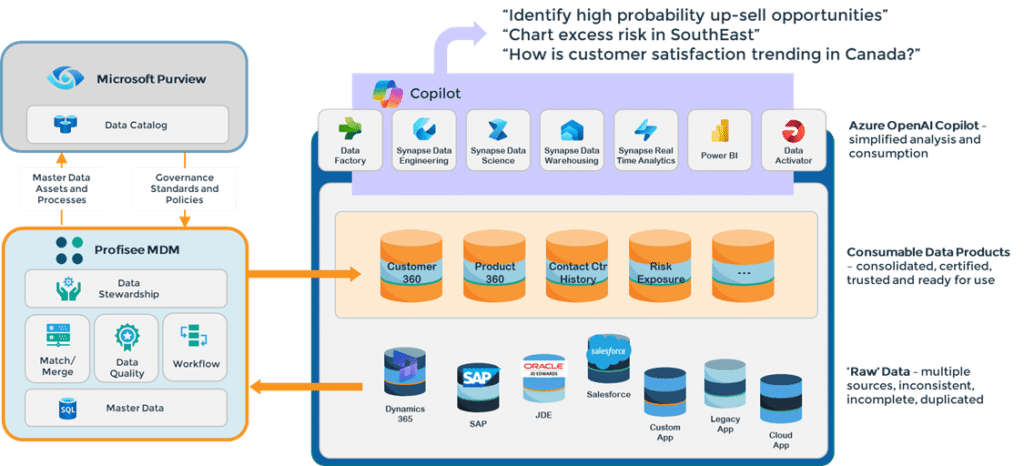
Making Your Data Work for You
The journey to consumable data involves more than just collecting and storing it. Data needs to be accessible, governed, and user-friendly to truly work for your business. By focusing on these three attributes, you’ll empower your teams to make faster, more informed decisions, ultimately driving business growth.
Whether you’re leveraging tools like Master Data Management (MDM) or implementing best practices for data governance, turning your data into a consumable asset will give your business the competitive edge it needs.
Learn how Microsoft Fabric and adaptive MDM can help turn your raw data into trusted, consumable information. Get the complete guide on data governance and MDM in Microsoft Fabric.
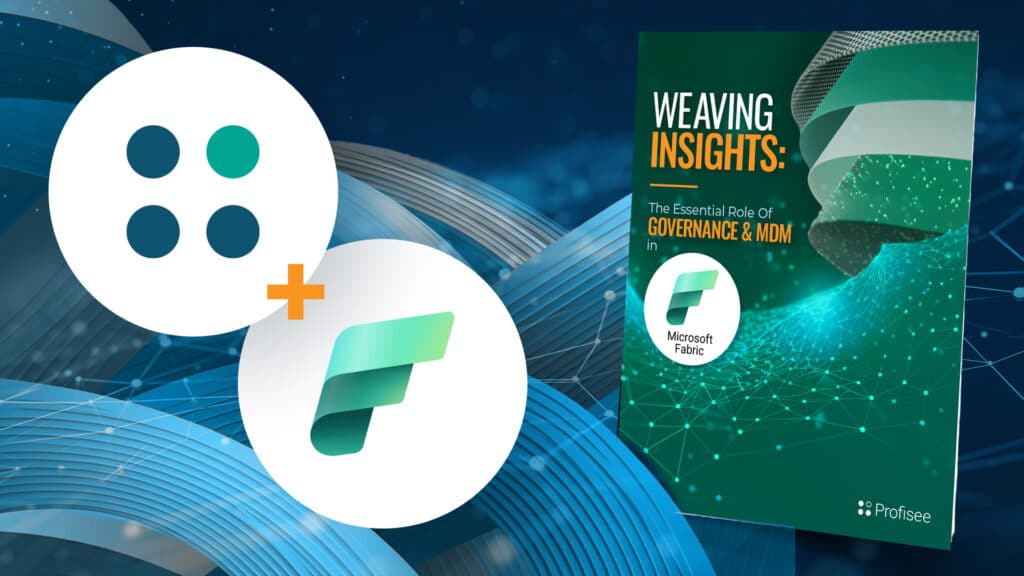
The Essential Role of Governance & MDM in Microsoft Fabric
Learn how adaptive MDM can help ready your enterprise data for the age of AI.

Benjamin Bourgeois
Ben Bourgeois is the Head of Product and Customer Marketing at Profisee, where he leads the strategy for market positioning, messaging and go-to-market execution. He oversees a team of senior product marketing leaders responsible for competitive intelligence, analyst relations, sales enablement and product launches. He has experience managing teams across the B2B SaaS, healthcare, global energy and manufacturing industries.







